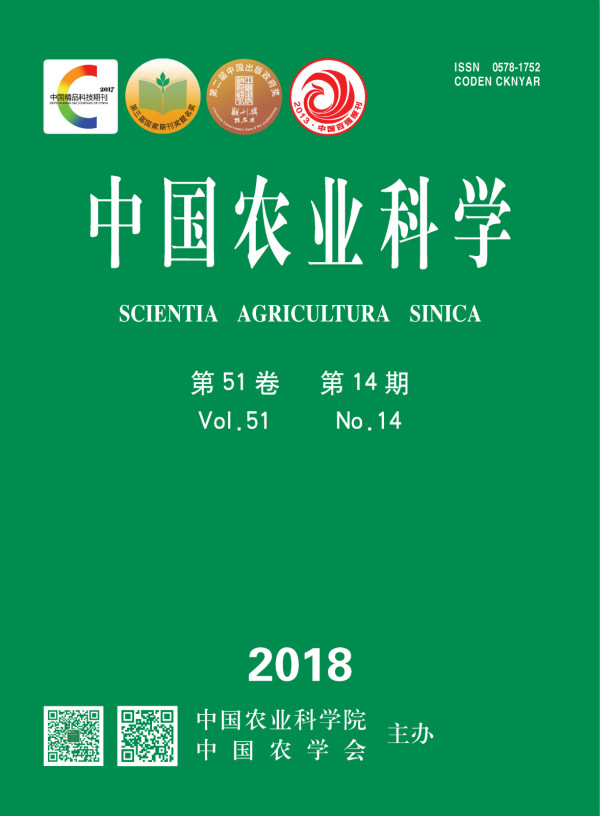-
Effects of Drought in Post-Flowering on Leaf Water Potential, Photosynthetic Physiology, Seed Phenotype and Yield of Hulless Barley in Tibet Plateau
- HOU WeiHai, WANG JianLin, HU Dan, FENG XiBo
-
Scientia Agricultura Sinica. 2018, 51(14):
2675-2688.
doi:10.3864/j.issn.0578-1752.2018.14.005
-
 Abstract
(
466 )
Abstract
(
466 )
 HTML
(
6 )
HTML
(
6 )
 PDF (2973KB)
(
734
)
PDF (2973KB)
(
734
)
 Save
Save
-
References |
Related Articles |
Metrics
【Objective】 Study on a drought stress response model of highland barley after anthesis in the plateau environment was established and a rapid, and effective detection method for the drought degree of highland barley was developed, so as to provide theoretical basis and technical reference for water-saving and high-yield cultivation of highland barley.【Method】The pot experiment of highland barley was carried out in drought shed at after anthesis, and light drought stress treatment (75% of controlled irrigation amount, LD), moderate drought stress treatment (50% of controlled irrigation amount, MD) and heavy drought stress treatment (25% of controlled irrigation amount, HD) were conducted for 13 days. WP4C PotentiaMeter, LI-6400XT and OS5P portable pulse modulated chlorophyll fluorometer were used to measure the leaf water potential (LWP), leaf evaporative cooling value (?T), photosynthetic gas exchange parameter and chlorophyll fluorescence variable, respectively. After maturity, plant laboratory test was conducted to obtain production data. Moreover, precise quantitative analysis of grain phenotypes of different treatments was conducted by digital image analysis method and grains were divided into three grain levels: large, medium and small according to the two-dimensional grain size.【Result】Drought level was positively correlated with leaf water potential and negatively correlated with leaf evaporative cooling value (?T) (P<0.05). Both of them were sensitive to reflect the drought degree of highland barley. Compared with CK, for LD, MD and HD treatments, the net photosynthetic rate of flag leaves (Pn), stomatal conductance (gs), intercellular CO2 concentration (Ci), transpiration rate (Tr), maximum fluorescence (Fm), maximum quantum efficiency of PS II (Fv/Fm), actual light quantum yield of PS II (ΦPSII), photochemical quenching (qP), and relative rate of photosynthetic electron transport (ETR) decreased due to drought stress, while stomatal limitation (Ls), original fluorescence (Fo) and non-photochemical quenching (NPQ) were on the rise. The effects of MD and HD on the above parameters were more significant compared with CK. The plant laboratory test data showed that with the increase of drought stress, the decreasing trend of 1000-grain weight, grain yield, grain weight per plant, dry matter accumulation, and economic coefficient of highland barley was more obvious. The correlation analysis showed that the decrease of gs induced by drought stress directly led to the increase of ?T and indirectly led to the decrease of FWP, which resulted in the increase of Fo, NPQ and the decrease of Fm, Fv/Fm, ΦPSII, ETR, qP and Pn, thus causing the decrease of two-dimensional grain size, grain diameter, grain perimeter, grain length and grain width and the increase of grain roundness. The proportion of small grains increased obviously, while the proportion of large grains decreased obviously.【Conclusion】LWP and ?T were sensitive to the drought stress of highland barley after anthesis, which could be used as an effective method to evaluate the drought degree. With the aggravation of drought stress, the changes of photosynthetic and chlorophyll fluorescence parameters in flag leaves of highland barley increased, causing the gradual decrease in phenotypic characters and grain levels of five grains, thus resulting in the decrease of 1000-grain weight, grain weight per plant, grain yield, dry matter accumulation and economic coefficient.









